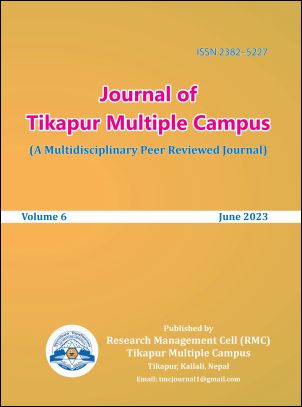Benefits of Agricultural Mechanization in Rice Farming of Chitwan, Nepal
DOI:
https://doi.org/10.3126/jotmc.v6i01.56386Keywords:
labour shortage, benefits, mechanization, rice farmingAbstract
A study was conducted in the Chitwan district to investigate the benefits of mechanization in rice farming. The study aimed to determine the rate of adoption of mechanization in rice farming in Chitwan, analyze farmers’ preferences towards mechanization for rice farming, and identify constraints during the implementation of farm machinery. A sample of 150 rice-growing commercial farmers in Chitwan was selected using a simple random sampling method from five municipalities. Descriptive analysis was used to study different socio-economic, demographic, and physical factors related to mechanization in rice farming. Primary data were collected using a semi-structured questionnaire, while secondary data were obtained through a review of literature from various sources. The results showed that farmers prefer Mould Board Plough and Cultivator as primary tillage operations. Labor scarcity was the major reason for adopting mechanization in rice farming, and some farmers preferred mechanization due to the unavailability of traditional tools in the study area. The reduction of human drudgery by mechanization was found to be moderate as human labor was not entirely replaced by machines. A binary log it regression model was used to determine the benefits of mechanization among paddy cultivators. The study found that the benefits of mechanization included an increase in total annual income, income from rice farming, off-farm income, total area under rice cultivation, improvement in living standards, and a reduction in the cost of production. The major problems in the implementation of mechanization in rice farming were ranked, and low income was identified as the main problem, followed by low subsidy.
Downloads
Downloads
Published
How to Cite
Issue
Section
License

This work is licensed under a Creative Commons Attribution-NonCommercial 4.0 International License.
This license enables reusers to distribute, remix, adapt, and build upon the material in any medium or format, so long as attribution is given to the creator. The license allows for commercial use.




